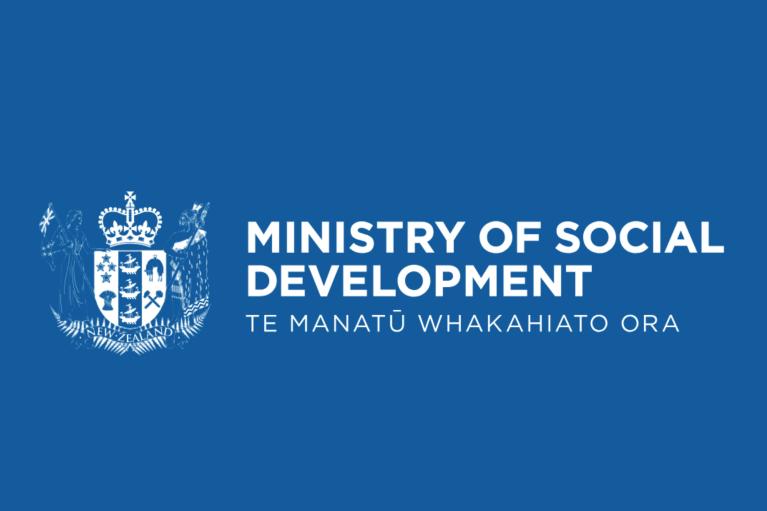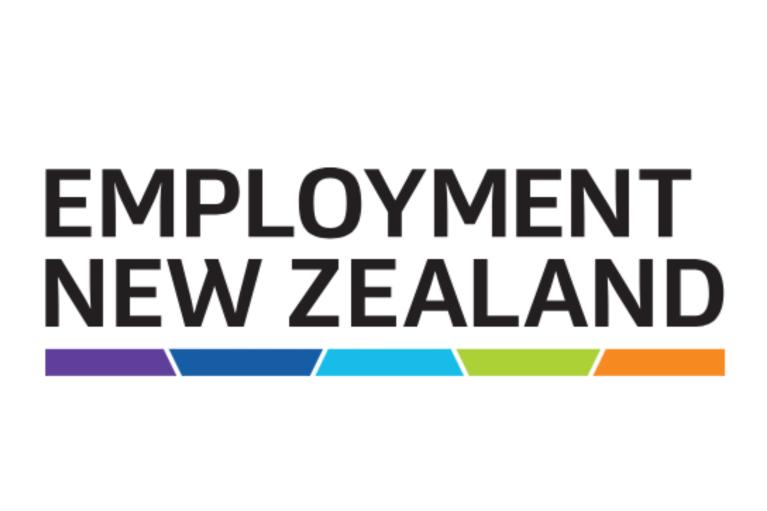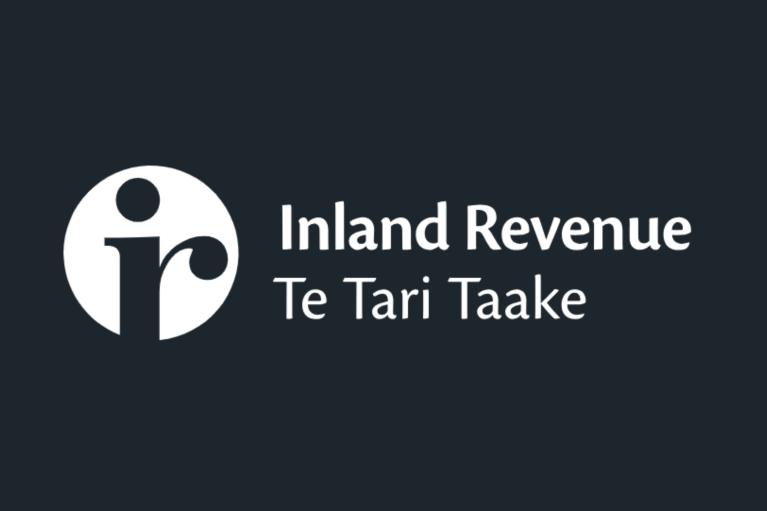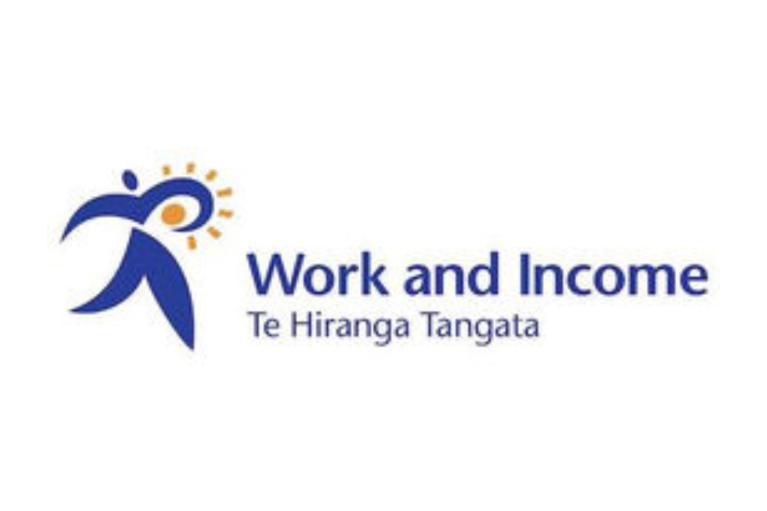Key points to remember about financial support for families
- there is a range of financial support for whānau
- the support varies depending on your situation
- make sure you check you're receiving all the financial support you're entitled to

Check out the Ministry of Social Development website to find out the ways Work and Income can help you and your family.
Paid Parental Leave
This is a payment for the primary carer while they take time off work on parental leave. The birth mother will be the primary carer in the first instance, however she can transfer all or some of her parental leave payment entitlement to her partner if:
- they both meet the parental leave payment test for either employees or self-employed people, and
- the partner will be stopping work to have the primary responsibility for the day to day care of the child, while receiving the parental leave payment.
If you or your partner are not giving birth to the child, you will need to decide who will be the primary carer.

For information about who can get this and how much you can claim, call Employment New Zealand on 0800 20 90 20 or see information about Paid Parental Leave, on the Employment NZ website.

The Inland Revenue Department (IRD) website also has information about Paid Parental Leave.
Working for Families
Working for Families is a package which pays extra money to many New Zealand whānau working and raising children.
Working for Families Tax Credits - 4 different types of payments
You may be able to receive one or more of these payments - it depends on your situation.
- best start tax credit
- family tax credit
- in-work tax credit
- minimum family tax credit

See the IRD website to see if you can get working for families payments.
Working for Families Tax Credits
Working for Families Tax Credits are payments for whānau with dependent children aged 18 and under. The payments are to help you raise your whānau. Entitlements are based on your yearly family income and circumstances.
A video explaining Working for Families tax credits and how they work.
Source: Inland Revenue Department
Registering for Working for Families Tax Credits
There are 3 ways to register for Working for Families payments.
- register in myIR
- complete an online form
- call IRD
A video about registering for Working for Families tax credits.
Source: Inland Revenue Department
transcribeTranscript
Scene 1
Visual
The title Registering for Working for Families Tax Credits is displayed.
A family of 2 parents and 2 children is shown in a living room, with 2 circles either side. One circle has Inland Revenue written in it, the other has Work and Income.
The family slides to the right under Work and Income, indicating they’re getting a main benefit and their Working for Families from them.
The family then slides to the left under Inland Revenue, indicating they’re getting their Working for Families from us.
The circles disappear and the family slides to the centre of the screen.
Audio
Music
Easy listening and joyful music plays throughout the entire video.
Narrator
Working for Families payments can be made by either Work and Income or Inland Revenue.
If you get a main benefit from Work and Income, they can make your Working for Families payments and you don’t need to register with us.
If you’re not getting a main benefit from Work and Income, you’ll get Working for Families payments from us.
Scene 2
Visual
The myIR logo appears in a circle to the right of the family.
A circle with a question mark appears above each family member, this is then replaced by an IRD number image.
The IRD number images are replaces by crosses, indicating no-one has an IRD number.
An internet browser appears with the myIR logo as the family fades out. A verification tick pops up at the top right of the screen.
Our web address ird.govt.nz is displayed.
The SmartStart web address smartstart.services.govt.nz is displayed.
Audio
Narrator
To register for Working for Families payments, myIR is the simplest, fastest way to go.
You’ll need some details to complete your registration.
If you want to get payments from Inland Revenue, you’ll need IRD numbers for you, your partner, and your children.
If you don’t have an IRD number for your child, you can still get Working for Families payments for up to eight weeks, to give you time to provide this information to us.
If you, your partner or your child don’t have an IRD number, you’ll need to apply.
This can be done online through myIR with document verification at an AA driver licensing agent.
There is further information on ird.govt.nz to help you through this process.
You can register your child’s birth and apply for their IRD number at the same time through smartstart.services.govt.nz.
Scene 3
Visual
An internet browser is displayed with a 1 on it.
A Working for Families registration appears on the screen, a dollar sign appears on it.
Icons for child support and income are displayed.
A magnifying glass appears with the words Before-tax Income in the middle of the glass.
Our web address ird.govt.nz is displayed.
A calendar appears indicating you can get Working for Families weekly or fortnightly.
The internet browser turns green with a big tick indicating the registration is complete.
Audio
Narrator
You only have to register for Working for Families once.
When you’re registering for Working for Families, you’ll also need to estimate your family income for the tax year, including any child support you receive or pay privately.
If you have a partner, you’ll need to include their income too.
We’ll need your before-tax income from 1 April to 31 March.
For more information on how to estimate your income, visit ird.govt.nz.
If you’re registered for myIR, we’ll fill in some information we already know about to make this easier for you.
You must also provide your bank account number and let us know if you want to get Working for Families payments weekly, fortnightly or as a lump sum at the end of the tax year.
Ok, that’s your registration done.
Scene 4
Visual
The family is back, a Notice of entitlement appears to the right of them.
The words AMOUNT and PAYMENT DATE are highlighted indicating these need to be checked. Ticks appear next to them.
A circle appears with rotating arrows around it. A dollar sign appears and is then replaced by 2 people. These indicate changes we need to know about.
Audio
Narrator
Once your registration has been processed, we’ll send you a Notice of Entitlement.
It will tell you how much your payments will be and when you can expect your first payment.
Make sure the details on your notice are correct to ensure you aren’t underpaid or overpaid.
Remember to tell us straight away about any changes to your family’s income or circumstances like someone getting a raise at work or someone moving out.
Scene 5
Visual
A seesaw appears as a number of circles with question marks drop onto the left side. This is the Working for Families received during the year.
A number of circles with dollar signs drop onto the right side, tilting the seesaw to the right. This is the income the family earned during the year.
A dollar circle moves to the question mark side, evening the seesaw out and showing some Working for Families needed to be paid back. The dollar circle that moved disappears.
A question mark circle moves to the dollar sign side showing the family did not get enough Working for Families so more was paid out.
The video ends with our web address ird.govt.nz displayed, which is then replaced by the Inland Revenue | Te Tari Taake logo.
Audio
Narrator
Through the tax year, the first of April till thirty-first of March, you get Working for Families payments based on how much you and your partner expect to earn that year.
Then, around June July when we have your and your partner’s income details, from employers or tax returns, we compare it against the amount your family actually earned to work out if you got the correct amount of Working for Families weekly or fortnightly payments.
This is what we call a square up, comparing how much you got based on your expected income to how much you should’ve got based on your actual income.
If you got too much, you’ll have to pay some back.
If you didn’t get quite enough, you’ll get some more.
To find out more about keeping us updated throughout the year and the end of year square up, visit ird.govt.nz.

Visit the IRD website to find out more about how to register for Working for Families.
Managing Working For Families Tax Credits
To make sure you get the right Working for Families payments, you need to keep IRD up to date with any changes in your whānau.
A video about managing changes with Working for Families.
Source: Inland Revenue Department
transcribeTranscript
Scene 1
Visual
The title Working for Families Tax Credits is displayed.
A person is standing outside their home. To show how busy life can be the following appear around the person:
a baby in a stroller
a child wearing a school bag
a child on a scooter
a child kicking a ball
the person’s partner.
After all this lightning bolt symbols appear over the person’s head.
The lightning bolts are replaced by a thought bubble with our logo inside of it.
Audio
Music
Easy listening and joyful music plays throughout the entire video.
Narrator
Life is busy, especially when you’re managing childcare, school, work, family, and all the other unexpected challenges life can throw at you.
It can be hard to remember to keep us up to date with changes.
Scene 2
Visual
A circle appears on the left of the screen with a dollar sign in the middle. Another circle appears on the right with a calendar in the middle.
The dollar sign turns into a form with YOUR INFORMATION written on it.
The calendar turns into 2 people with arrows spinning around the edge of the circle.
A big tick appears on top of the YOUR INFORMATION form.
The YOUR INFORMATION form moves to the middle of the screen, a dollar sign with an arrow pointing down appears, this is then replaced by a dollar sign with an arrow pointing up. These indicate you could be under or overpaid if the information we have about you is not up to date.
Audio
Narrator
It’s important we pay you the right amount, at the right time.
To do this, we need you to check that the information we have is correct, and keep us up to date with any changes to your family circumstances.
Because the amount we pay you depends on the information you provide, you could be underpaid, or overpaid if we don’t have the right information.
Scene 3
Visual
The YOUR INFORMATION form moves to the left of the screen again. A person sitting at a desk with a computer and folders appears on the right.
The form flies to the left, the work scene changes to show 2 parents at home. The form lands on the left of the screen again.
The form increases in size and the following appear with ticks next to them:
Family details
1 April to 31 March income
Income for next tax year.
The form decreases in size, a cross appears indicating some information is wrong.
Icons for letters and emails, and the myIR logo appear.
A tick appears on the form again.
Audio
Narrator
If you work, we receive some information from your employer, but it is your responsibility to update your information with us, if you or your partner’s income changes.
You need to check we have:
the right details about you and your children
the right income for the past tax year, that’s the first of April till the thirty-first of March
estimated the right family income for the next tax year.
If you see that we don’t have the right information about you or your partner based on letters or emails we send you, or what you see in myIR, you need to update your details to make sure you get paid the right amount.
Scene 4
Visual
The screen is split into 2 halves side-by-side. A person sitting in an armchair and a toddler with a speech bubble appear on the left. 2 Parents celebrating a child kicking a ball appear on the right.
A circle with a dollar sign appears on the left. A circle with 2 people and arrows spinning around the edge appears on the right.
The circle on the right disappears. The dollar sign changes into the following symbols:
2 arrows, 1 pointing up and the other down indicating increases or decreases in income
a clock indicating changes in hours of work
a person with a dollar sign next to them indicating self-employed income
a hand with a child in it indicating changes to child support
a hand with a dollar sign in it indicating changes to benefits
a hand with a piggy bank in it indicating changes to pensions
the letters ACC indicating changes to ACC payments
a graduation cap (mortar board) indicating changes in a student allowance.
The circle on the right with 2 people and arrows spinning around the edge reappears. The icon in the middle changes to the following:
a house with 2 people next to it indicating a partner leaving or joining the family
a baby indicating a new child is in the care of the family
a person holding the hand of a parent indicating the child is moving out
2 arrows circling each other indicating shared care arrangements have changed
a house with a letterbox beside it indicating the family has moved
an old telephone indicating a change in contact details.
Audio
Narrator
You don’t need to tell us about every family milestone like first words or first football goals.
You just need to tell us when your family income changes, or your family circumstances change, so we can make sure you’re getting paid the correct amount.
We need to know about increases and decreases in income, changes in hours of work, if you start or stop earning self-employed income, changes in child support, benefits, pensions, ACC and any changes to your student allowance.
We also need to know if your family circumstances change.
Please tell us if your spouse or partner moves in or out, you start looking after a child, a child leaves your care, or your shared care arrangements change.
We also need to know if you move to a new address, or change your contact details.
Scene 5
Visual
An internet browser takes over the screen with the myIR logo on it.
Our web address ird.govt.nz replaces the myIR logo.
A form with YOUR INFORMATION written on it replaces our web address. A tick appears on the form indicating the family details have been checked in myIR and are correct.
An envelope icon replaces the form indicating you can message us in myIR. A circle with 15 appears next to the envelope indicating it can take up to 15 working days to get a response to any messages sent in myIR. An envelope icon replaces the circle with 15 in it, suggesting we normally respond quicker than that.
A circle with the deaf and hard of hearing logo appears on the left, a circle with a speech bubble appears on the right.
Our web address ird.govt.nz replaces both circles.
Audio
Narrator
The simplest, fastest way to tell us about any changes is through your myIR account.
If you haven’t registered yet, you can set this up by visiting ird.govt.nz.
You can keep your information up-to-date and send us messages through myIR.
You’ll receive a reply letting you know it may take up to fifteen working days for a response.
We usually respond to messages faster than that, so you’re likely to hear back from us sooner.
If you are hard of hearing, or would like a translator to help you, there is a range of services to help support you.
Please visit ird.govt.nz for more information.
Scene 6
Visual
A family of 2 parents and 4 children appears with a calendar next to them on the left. The calendar has a day highlighted each week. These highlighted days disappear indicating payments have stopped.
An end-of-year bill notice replaces the calendar.
A thought bubble appears over the head of 1 parent with our logo inside it. Our logo turns into a tick indicating the family has told us about any changes.
INCOME TAX ASSESSMENT appears on the bill notice and moves to the middle of the screen.
A magnifying glass appears on the assessment with 7 FEB inside it, this changes to 7 APR.
The magnifying glass is replaced by an envelope icon indicating we’ll send a reminder letter before the due date of a bill.
A percent symbol appears indicating penalties and interest apply when a bill is not paid in full by the due date.
Audio
Narrator
If you don't tell us about changes as they happen, your weekly or fortnightly payments may reduce or stop, or you may get a bill at the end of the tax year.
The sooner you tell us about a change, the better.
If your end-of-year income tax assessment shows you have a Working for Families bill to pay, we’re here to support you to do this.
Your bill won’t be due until the seventh of February, or seventh of April if you have a tax agent.
We’ll send you a reminder letter before your payment is due.
If you haven’t paid your bill in full by the due date, penalties and interest may apply.
Scene 7
Visual
The income tax assessment moves to the left, a circle with a dollar sign and WORKING FOR FAMILIES PAYMENTS appears on the right.
Quarter of the Working for Families circle is shaded indicating some of this is being used to repay the bill every pay day. A laptop with the myIR logo appears indicating you can choose to use this option in your myIR account. The myIR logo is replaced by an envelope.
Audio
Narrator
We’ve got options on how to repay overpayments to suit your circumstances, including, using current Working for Families payments to repay overpayments.
Some customers prefer to use some of their weekly or fortnightly Working for Families payments to pay off their bill.
If this sounds like you, you can set this up in myIR specifying how much you would like taken out of your payments every week or fortnight.
Or, get in touch and we’ll set it up for you.
Scene 8
Visual
A calendar replaces the Working for Families payments circle. A day is highlighted on every week, then 2 days disappear indicating you can make payments weekly or fortnightly.
A payslip replaces the calendar indicating you can have repayments made straight from your pay. A tick appears on the payslip.
Audio
Narrator
Setting up a payment plan.
Payment plans can make things easier by splitting what you owe over weekly or fortnightly repayments.
This could be an automatic payment or a deduction from your income.
We’ll work with you to ensure any repayments are affordable.
Scene 9
Visual
A thumbs down icon appears, this is then replaced by a laptop with 3 dollar signs on the screen indicating a payment plan. An envelope icon replaces the dollar signs indicating you can message us with your payment plan proposal.
A big tick appears in the middle of the screen. A family then appears with 2 parents and 4 children.
The video ends with our web address ird.govt.nz and logo.
Audio
Narrator
Online instalment arrangement.
We know sometimes talking about money can be awkward.
If you’d prefer not to talk to us, you can propose a payment plan that works for you, using our online installment arrangement tool.
Or, send us a myIR message, letting us know your current situation and how we can help.
If paying money back just isn’t possible right now, we’ll work with you to come up with a solution.
Send us a message through myIR or give us a call.
We want to make this as stress free as we can, so you can focus on your family, and the things that are important to you.

Visit the IRD website to learn more about managing Working For Families Tax Credits.
Extra financial support you may be able to get while receiving a benefit from Work and Income

Check the information about benefits and payments at the Work and Income NZ website to make sure you're getting the help you're entitled to. You can also use the 'Check what you might get' guide on their website.
Help with childcare costs

Work and Income may be able to help you with childcare costs - it depends on your circumstances and how much you and your partner earn. Check the Work and Income NZ website for information about childcare and the options available.
Different kinds of support for childcare costs
- Childcare Subsidy - for help with the cost of preschool childcare
- Flexible Childcare Assistance - for help with childcare outside normal hours
- OSCAR Subsidy - for help with before-school or after-school care, or holiday programmes, once your child starts school
- Guaranteed Childcare Assistance Programme - for parents under 20 years old with children under 5 years old
- Early Learning Payment - for parents whose children are aged between 18 months and 3 years old and in a Family Start or Early Start Programme
Home Help
You may be able to get Home Help to help with costs if:
- you've had a multiple birth, or
- you have a domestic emergency, or
- you need help with things like laundry, housework, cooking or childcare
- need to train in parenting skills
- have adopted 2 or more children from the same pregnancy

For more information about home help and if you qualify for it, check the Work and Income NZ website.
Community Services Card
The Community Services Card can help you and your whānau with the costs of healthcare. You'll pay less for some health services and prescriptions. If you have not received one, and think you should have, please phone Work and Income on 0800 999 999.

You can also visit the Work and Income NZ website for information about the Community Services Card.
Child Support
Child Support is financial support paid by a parent not living with their child or who share care of their children with another person.
What is the Unsupported Child's Benefit?
Unsupported Child’s Benefit is a weekly payment that helps carers who are supporting a child or young person whose parents can't care for them because of a family breakdown.

See the IRD website for information about Child Support or call 0800 221 221
Orphan's Benefit
Orphan's Benefit is a weekly payment that helps carers supporting a child or young person whose parents have died or can't be found, or can't look after them because they have a long-term health condition or incapacity.

Check the Work and Income website for more information on the Orphan's Benefit.
Other help you may be able to get from Work and Income NZ

Work and Income NZ has a wide range of financial help available to people on a benefit or working in a variety of circumstances. If you have costs that you can't meet on your own visit the Work and Income NZ website or contact Work and Income on 0800 559 009
What if my child has a disability or chronic condition?
Financial support may be available because of your child's special needs.
Financial Help When Your Child Has A Disability Or Chronic Condition
